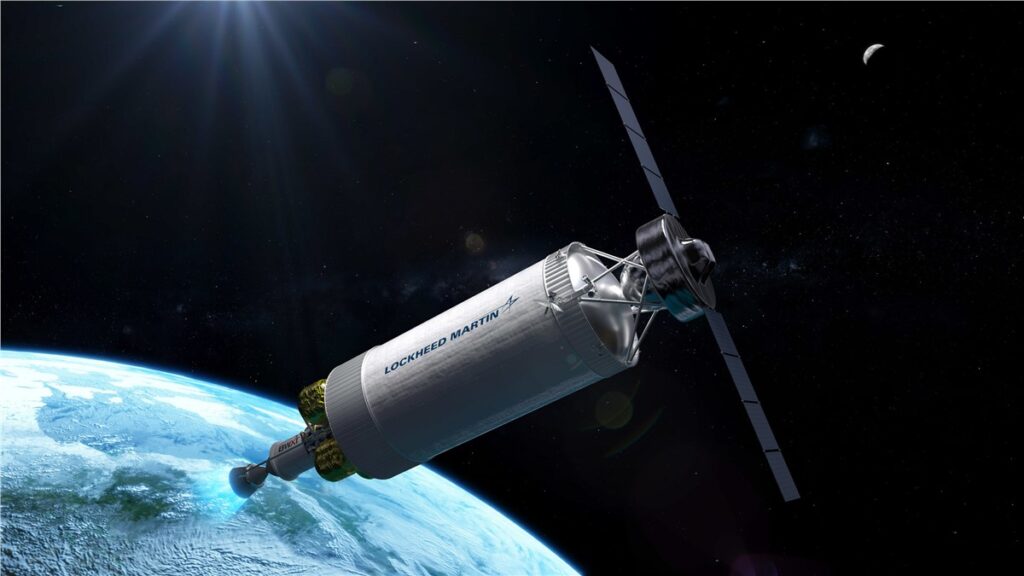Lockheed Martin has secured a contract from the Defense Advanced Research Projects Agency (DARPA) to develop a nuclear-powered spacecraft as part of the Demonstration Rocket for Agile Cislunar Operations (DRACO) project. This project aims to advance propulsion technology for the benefit of exploration and national defense.
DARPA has partnered with NASA’s Space Technology Mission Directorate on the DRACO project, as both agencies stand to gain from this cutting-edge technology. The in-space flight demonstration of a nuclear thermal rocket engine vehicle is scheduled to take place no later than 2027.
While chemical propulsion engines have been the standard for spaceflight, more powerful and efficient propulsion is needed for humans to travel to Mars. Nuclear thermal propulsion (NTP) engines offer thrust comparable to conventional chemical propulsion but with two-to-five times higher efficiency. This means that spacecraft can travel faster and farther, while significantly reducing the need for propellant. NTP engines also enable abort scenarios on journeys to Mars that are not possible with chemical propulsion systems.
Kirk Shireman, Vice President of Lunar Exploration Campaigns at Lockheed Martin Space, emphasized the importance of reducing transit time for human missions to Mars to limit radiation exposure. He stated,
“These more powerful and efficient nuclear thermal propulsion systems can provide faster transit times between destinations.”
Shireman also highlighted the potential of nuclear thermal propulsion for transporting humans and materials to the Moon, as well as its national security applications for cislunar space.
The NTP system utilizes a nuclear reactor to rapidly heat hydrogen propellant to high temperatures. The heated gas is then channeled through the engine nozzle to generate powerful thrust. The fission-based reactor will utilize a special high-assay low-enriched uranium (HALEU) to convert cryogenic hydrogen into an extremely hot pressurized gas. Importantly, the reactor will only be activated once the spacecraft has reached a nuclear safe orbit, ensuring the safety of the NTP system.
Lockheed Martin has partnered with BWX Technologies to develop the nuclear reactor and produce the HALEU fuel. Joe Miller, President of BWXT Advanced Technologies LLC, expressed excitement about expanding into space and delivering nuclear products and capabilities to the U.S. Government. The reactor will be built and the fuel manufactured at BWXT’s facilities in Lynchburg, Virginia.

While nuclear systems are still an emerging field, Lockheed Martin brings a wealth of expertise in nuclear controls, having built many of NASA’s radioisotope thermoelectric generators for planetary missions. The company has also made significant investments in cryogenic hydrogen storage and transfer, a crucial technology for deep space exploration, not only for NTP but also for conventional propulsion systems.


 Copyright 2023 All rights reserved.
Copyright 2023 All rights reserved.